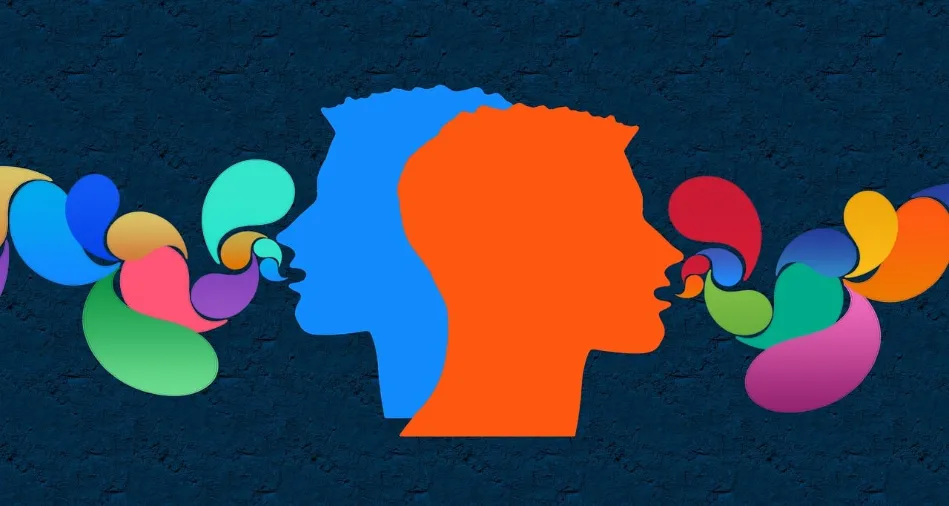[read-time]

Micromanaging can be a significant hurdle in the workplace, causing stress and hindering productivity. However, understanding and leveraging the blue personality trait offers a potential solution to this common problem. This unique characteristic, often revealed through personality assessments, has the potential to transform management styles and create more harmonious work environments.
The blue personality trait is associated with qualities such as calmness, empathy, and attention to detail. These attributes can help managers develop a more balanced approach to leading their teams. By exploring how the blue trait influences leadership styles, individuals can learn to delegate effectively, foster trust, and ultimately stop micromanaging. This article will examine the blue personality trait, discuss its impact on management techniques, and provide strategies to harness its strengths for improved team dynamics and productivity.
Understanding the Blue Personality Trait
The blue personality trait is characterized by a unique set of qualities that significantly influence an individual’s approach to work and leadership. People with blue personalities are known for their analytical thinking, attention to detail, and strong organizational skills. These individuals value loyalty, patience, and sincerity, striving to bring balance into their lives.
Characteristics of Blue personalities
Blue personalities excel in strategic planning and problem-solving. They possess a keen eye for detail and enjoy critically analyzing information, which contributes to making well-informed decisions. These individuals are often risk-averse, preferring a slow and steady approach when it comes to decision-making. Their analytical nature allows them to spot patterns and make logical connections efficiently.
How Blue traits relate to management style
In leadership roles, individuals with blue personalities exhibit operational leadership styles. They are the go-to people for building processes and systems from scratch, helping to establish company culture and implement new initiatives. Blue leaders are often found in logistics, operations, or finance roles, where their attention to detail and analytical skills are highly valued.
Benefits of Blue traits in leadership
The blue personality trait offers several advantages in leadership positions. Blue leaders excel in research, continuously expanding their knowledge base and staying updated with industry advancements. Their strong organizational and planning skills contribute to increased productivity and meeting deadlines. Additionally, blue leaders prioritize quality in their work, striving for excellence and ensuring that tasks meet or exceed expectations.
However, it’s important to note that blue personalities may face challenges such as overthinking, indecisiveness, and sensitivity to criticism. Despite these potential drawbacks, their analytical skills, patience, and goal-oriented nature make them valuable assets in management roles, particularly when it comes to developing systematic approaches and fostering a detail-oriented work environment.
Recognizing Micromanagement Tendencies

Is micromanaging bullying?
Micromanaging is not inherently bullying, but it can cross the line into bullying behavior when taken to extremes. In the workplace, micromanagement becomes problematic when it negatively impacts employees’ mental health, confidence, and job performance.
Signs of micromanagement
Micromanaging often stems from insecurity and a need for control. Managers who exhibit this behavior tend to oversee every aspect of their employees’ work, constantly requesting updates and approving even minor decisions. This excessive involvement can manifest as a reluctance to delegate tasks or trust team members with responsibilities. Micromanagers may also struggle to see the bigger picture, becoming overly focused on minute details at the expense of overall project goals.
Impact on team morale and productivity
Leaders who micromanage have adverse effects on team dynamics and individual performance, which can be severe. Employees subjected to constant scrutiny may experience a loss of confidence and motivation. The work environment becomes tense, and creativity suffers as employees hesitate to voice their ideas or take initiative. Productivity often declines as workers spend more time justifying their actions than completing tasks.
Self-assessment for micromanagers
Recognizing micromanaging tendencies is crucial for personal growth and team success. Managers can use self-assessment tools, such as pulse surveys, to evaluate their management style. These assessments help identify areas where micromanagement may be occurring and provide guidance for improvement. It’s important to note that some degree of close management may be necessary in certain situations, but finding the right balance is key. By fostering accountability and ownership among team members, managers can move away from micromanagement and towards a more effective leadership approach.
Leveraging Blue Traits to Delegate Effectively
Individuals with blue personalities possess unique traits that can be leveraged to delegate effectively and overcome micromanagement tendencies. Their analytical thinking, attention to detail, and strong organizational skills make them valuable assets in leadership roles. By understanding and utilizing these characteristics, managers can create a more balanced and productive work environment.
Trust-building strategies
Building trust is crucial for effective leadership and delegation. Blue personalities excel at creating a foundation of Trust of Character, which sets the tone for teamwork. They demonstrate reliability by doing what they say they will do, fostering mutual trust within the team. To build trust with blue team members, leaders should provide clear, specific, and factual information, allowing time for reflection and offering details in writing.
Empowering team members
Blue personalities thrive when given opportunities to engage in tasks that require logical thinking and precision. To empower these individuals, leaders should assign responsibilities that benefit from their reliability and dedication. Encouraging them to use their personality traits in spotting patterns and solving problems can lead to increased productivity and job satisfaction.
Focusing on outcomes rather than processes
While blue color personalities traits excel in planning and analysis, they may struggle with quick decision-making. To help them focus on outcomes rather than getting bogged down in processes, leaders can assist in developing strategies for faster decision-making 10. Encouraging them to trust their instincts and commit to a course of action can improve overall efficiency.
By leveraging these blue traits, leaders can create an environment that fosters trust, empowers team members, and focuses on results. This approach not only helps to stop micromanagement but also enhances team performance and satisfaction.
Developing a Blue-Inspired Management Approach

Cultivating empathy and understanding is crucial for developing a blue-inspired management approach. Blue personalities possess a deep capacity for empathy, allowing them to connect with others’ emotions and perspectives. Leaders can grow their empathy by practicing active listening, being present, and taking a genuine interest in their team members. This approach fosters trust, engagement, and cooperation within the team.
Encouraging open communication is another key aspect of blue-inspired management. Blues excel in articulating thoughts and feelings with clarity and empathy. Leaders can create an inclusive environment by providing clear agendas, timelines, and expectations when communicating with blue team members. It’s important to allow time for reflection and offer reassurance when needed. By encouraging everyone to speak up and valuing diverse viewpoints, leaders can foster psychological safety and a sense of belonging.
Balancing structure with flexibility is essential for effective leadership. Blues appreciate logical reasoning and prefer structured information. However, leaders must also adapt to changing circumstances. By providing information in a structured manner while remaining flexible, leaders can create stability and adaptability within their teams. This balance helps reduce stress and uncertainty while keeping the team competitive and relevant.
To implement a blue-inspired management approach, leaders should focus on building strong relationships, addressing the full spectrum of personality types in their communication, and fostering a collaborative environment. By incorporating these strategies, managers can leverage the strengths of blue personalities to create a more harmonious and productive workplace.
The Takeaway
The blue personality trait offers valuable insights to help managers move away from micromanagement and create a more balanced leadership approach. By tapping into qualities like empathy, attention to detail, and strong organizational skills, leaders can foster trust, empower team members, and focus on outcomes rather than processes. This shift not only improves team dynamics but also boosts productivity and job satisfaction.
Developing a blue-inspired management style involves cultivating empathy, encouraging open communication, and striking a balance between structure and flexibility. By embracing these strategies, leaders can create a work environment that values diverse perspectives, promotes psychological safety, and adapts to changing circumstances. This approach not only helps to stop micromanagement but also paves the way for a more harmonious and effective workplace.
Interested in discovering more about your personality color? Consider taking an assessment today to unlock new dimensions of your personality and optimize your learning processes!
FAQs
8 Morning Habits of Highly Successful People You Can Adopt
What exactly do these high achievers do in those early hours that sets them apart? And more importantly, how can…
Are Personality Changes Possible? The Science Says Yes
Personality change, is it possible? We can often wonder if we’re stuck with the personality we’re born with or if…
The Hidden Dangers of Flow State: 2 Warning Signs You’re
Flow state is an intriguing phenomenon. Have you ever been so engrossed in an activity that time seems to stand…
The Domino Effect in psychology refers to the cascading impact
[read-time] The Domino Effect in psychology refers to the cascading impact of one behavior, thought, or action leading to a chain…
Uncovering Social Desirability Bias in AI Personality Tests: The Surprising
An intriguing area of study of AI involves social desirability bias when administering personality tests to large language models (LLMs)…
Emotional Intelligence and Personality Color Traits: 9 Intriguing Connections!
[read-time] A novel approach has emerged, linking Emotional intelligence, personality traits and color psychology. This innovative perspective offers fresh insights into…






